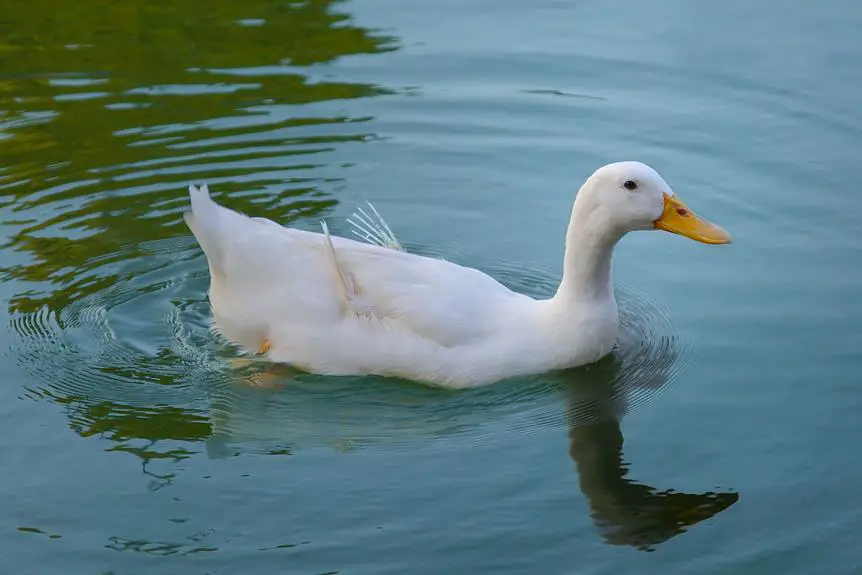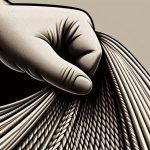Have you heard of cotton duck?
It's not just a type of fabric—it's a versatile, durable material with a fascinating history and a wide range of applications.
If you're looking to expand your knowledge of textiles, understanding the origins, characteristics, and advantages of cotton duck is essential.
Let's dive into this intriguing fabric and explore its uses and benefits.
Key Takeaways
- Cotton duck originated in ancient times for sails and tents and has since spread to Europe and the Americas.
- Cotton duck is known for its exceptional durability and offers a degree of water resistance.
- It is a versatile and adaptable fabric that is suitable for various applications, including workwear, upholstery, and outdoor gear.
- Cotton duck has exceptional strength and durability, is easy to dye and customize, and provides a long-lasting investment.
The Origins of Cotton Duck
Have you ever wondered where cotton duck originated from?
The history of cotton duck dates back to ancient times when it was first developed as a durable fabric for sails and tents. Its origins can be traced to the ancient civilizations of India and China, where the production of cotton duck flourished due to the high demand for sturdy textiles.
The production of cotton duck eventually spread to Europe and the Americas during the age of exploration and colonization.
The development of cotton duck as a versatile and rugged fabric continued to evolve as it became widely used for various industrial and military applications. Its history is intertwined with the growth of the textile industry and the advancements in weaving technology.
Over time, cotton duck has become a staple material in the manufacturing of workwear, outdoor gear, and upholstery due to its strength and durability.
Understanding the origins and development of cotton duck provides valuable insights into the historical significance of this fabric and its continued relevance in modern-day production.
Characteristics of Cotton Duck
You can find cotton duck with a tight weave and a durable, heavyweight construction, making it ideal for various rugged applications. When considering the characteristics of cotton duck, here are a few key points to keep in mind:
- Durability: Cotton duck is renowned for its exceptional durability, making it highly resistant to wear and tear. This robust fabric can withstand heavy use and harsh environmental conditions, ensuring longevity and reliability in a wide range of settings.
- Water Resistance: Due to its dense weave and heavy construction, cotton duck offers a degree of water resistance. While not entirely waterproof, it provides protection against light moisture and drizzles, making it suitable for outdoor gear and utility items.
- Versatility: Cotton duck's versatility is a significant characteristic, as it can be used for various applications, including upholstery, bags, tarps, and workwear. Its adaptability and strength make it a popular choice across different industries.
- Sturdiness: The sturdiness of cotton duck fabric makes it an excellent choice for heavy-duty projects. Whether it's crafting sturdy aprons, constructing tents, or making durable work pants, the fabric's robust nature ensures that it can withstand demanding tasks and environments.
Applications of Cotton Duck
Explore the diverse applications of cotton duck, ranging from heavy-duty workwear to durable upholstery and outdoor gear.
Cotton duck's durability and versatility make it a popular choice for a wide range of uses. In the realm of workwear, cotton duck fabric is often used for rugged clothing such as overalls, jackets, and coveralls, providing reliable protection in demanding work environments. Its sturdiness and resistance to wear and tear make it an ideal material for heavy-duty work attire.
Additionally, cotton duck's durability and strength lend themselves well to upholstery applications, where it can be used to cover furniture, cushions, and pillows, offering both resilience and comfort.
Furthermore, the fabric is valued in the production of outdoor gear such as tents, backpacks, and tarps due to its ability to withstand harsh weather conditions and rough handling. Its ability to endure the elements makes it an excellent choice for outdoor equipment.
The diverse applications of cotton duck showcase its remarkable adaptability and reliability across various industries and settings.
Advantages of Cotton Duck
When considering cotton duck, it's important to understand its numerous advantages in various applications. This durable fabric is a versatile material that offers several benefits for a wide range of uses:
- Strength and Durability: Cotton duck is known for its exceptional strength and durability, making it a reliable choice for heavy-duty applications. Whether it's used for making workwear, backpacks, or upholstery, this fabric can withstand wear and tear, making it a long-lasting investment.
- Water Resistance: Treated cotton duck can offer water resistance, making it suitable for outdoor applications such as tarps, tents, and awnings. Its ability to repel water makes it a practical choice for protecting against the elements.
- Breathability: Despite its durability, cotton duck remains breathable, allowing air to circulate. This feature makes it suitable for clothing and accessories, providing comfort and preventing overheating.
- Ease of Dyeing and Customization: Cotton duck readily accepts dyes, allowing for a wide range of color options. Additionally, it can be easily customized through printing or embroidering, making it a versatile choice for creating personalized items.
Understanding the advantages of cotton duck can help you make informed decisions when choosing materials for your projects.
Tips for Working With Cotton Duck
To effectively work with cotton duck, consider pre-washing the fabric to prevent shrinkage and enhance its pliability for sewing and crafting projects.
Cotton duck is a sturdy and durable fabric, making it ideal for a wide range of sewing techniques. When working with this fabric, use sharp scissors or a rotary cutter to ensure clean, precise cuts.
Because of its thickness, a heavy-duty needle is recommended for sewing cotton duck to prevent breakage and ensure smooth stitching. Additionally, using a longer stitch length can help prevent puckering and ensure a professional finish.
When sewing seams, consider pressing them open to reduce bulk and create a cleaner look. For added durability, reinforcing stress points such as corners and handles with extra stitching can prolong the life of your project.
Whether you're making tote bags, upholstery, or other heavy-duty items, these tips will help you master the art of working with cotton duck, ensuring that your projects aren't only visually appealing but also built to last.
Frequently Asked Questions
How Is the Demand for Cotton Duck Expected to Change in the Future?
The demand for cotton duck is expected to rise due to market trends favoring sustainability. Future applications in various industries will drive global demand. As awareness grows, the market for cotton duck is poised for expansion.
What Are the Different Types of Cotton Duck Weaves Available in the Market?
When you're looking at different types of cotton duck weaves available in the market, it's important to consider factors like cotton duck durability and its diverse applications in various industries. Understanding these aspects can help you make informed decisions.
Are There Any Environmental Concerns Related to the Production of Cotton Duck?
Environmental impact is a concern in cotton duck production. Sustainable alternatives like organic cotton or hemp exist. Choosing these options reduces the impact on the environment. Being aware of the production process can help make more sustainable choices.
What Are Some Common Misconceptions About Cotton Duck?
Misconceptions about cotton duck include it being heavy, only for industrial use, and not versatile. But it's actually durable, great for various projects, and available in different weights for different purposes.
Can Cotton Duck Be Dyed or Printed With Custom Designs?
Yes, cotton duck can be dyed and printed with custom designs. Its natural fibers make it an ideal fabric for customizing with vibrant colors and intricate patterns, allowing for endless possibilities in creating unique and personalized textiles.
- Tetron Fabric for Marine Applications: Durability and Use Cases - June 18, 2025
- Tetron Fabric for Outdoor Furniture: Weather Resistance and Care - June 18, 2025
- Tetron Fabric for Wall Coverings: Style and Application Tips - June 18, 2025




